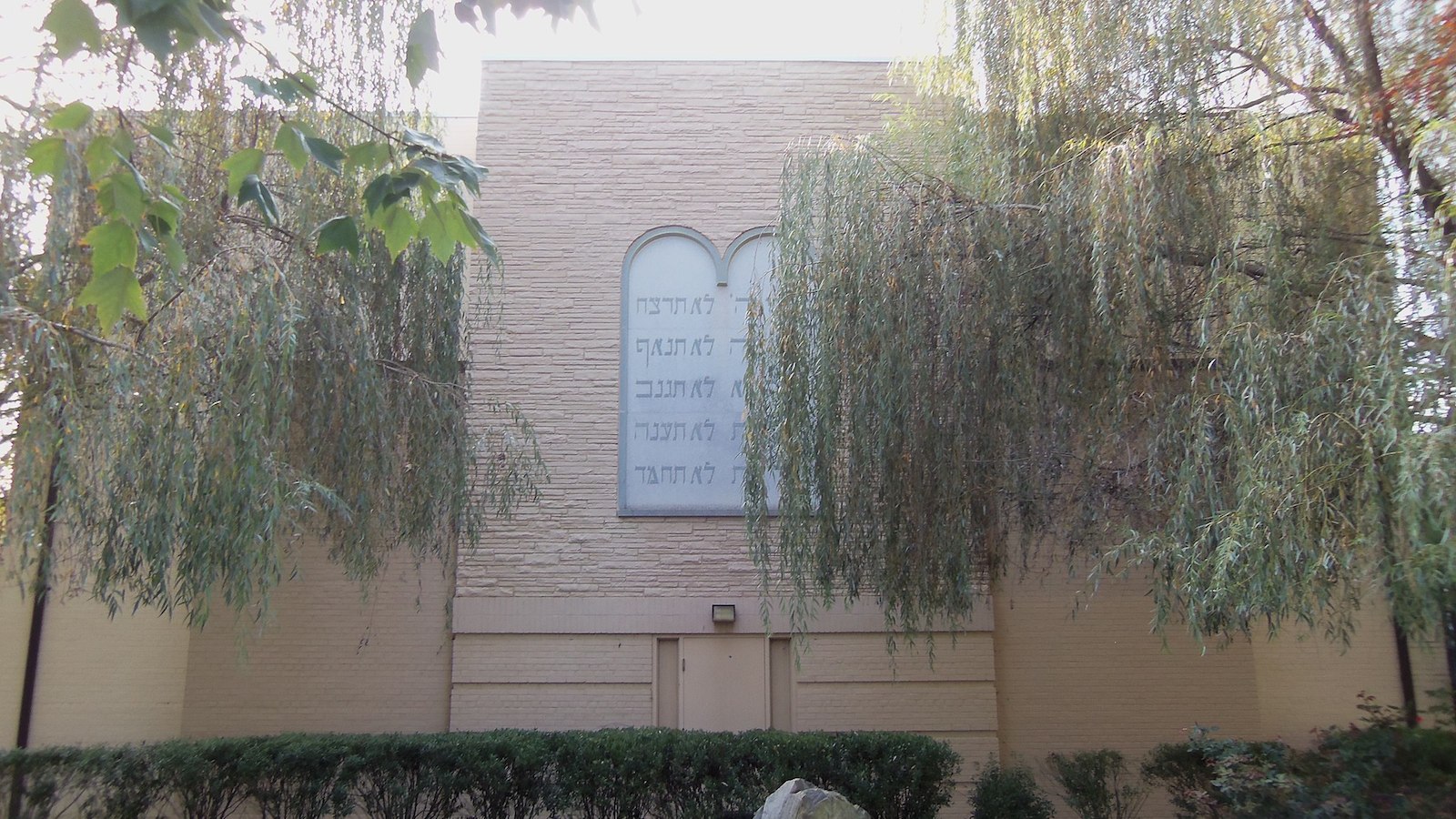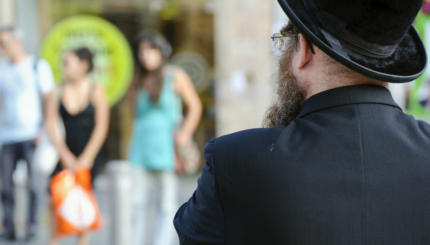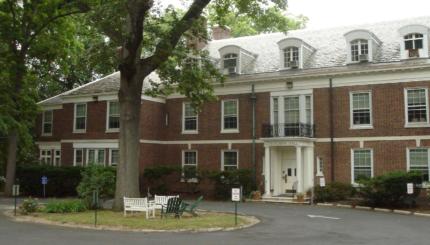The Conservative movement is one of the three largest religious denominations within American Judaism. Historically it has occupied a sort of middle ground between Reform and Orthodox, maintaining (unlike Reform) that Jewish law remains binding on modern Jews, but affording far greater leeway than Orthodoxy in adapting those laws to reflect modern realities.
- The movement tolerates a range of religious practice in its commitment to pluralism — the idea that multiple (and opposing) opinions concerning the requirements of Jewish law can be considered equally legitimate.
- Most (but not all) Conservative synagogues are egalitarian on gender issues, and the movement has endorsed religious rulings both in favor of and opposed to same-sex marriage.
- While its rabbis are not permitted to officiate at interfaith weddings, the movement has in recent years made a greater effort to welcome interfaith couples and families into its congregations. One of its mottos has been “Tradition and Change.”
- In the mid-20th century, the Conservative movement was the dominant stream of American Judaism. In some years in the 1950s, the movement was adding 100 new affiliate congregations annually. But by the end of the century, the movement was in serious decline, with some fretting openly that Conservative Judaism was on the road to oblivion.
Conservative Judaism’s Beginnings
The movement began as an effort to “conserve” traditional Judaism in the face of the liberalizing tendencies of Reform leaders in the late 19th century. One critical moment of division is often said to be the Reform movement’s famous 1883 “trefa banquet,” when non-kosher foods were served at a dinner honoring the first rabbis ordained through the Reform seminary Hebrew Union College. The Jewish Theological Seminary of America, which would become the flagship institution of the Conservative movement, was founded in 1886 — one year after Reform adopted its Pittsburgh Platform of 1885, which explicitly rejected Jewish practices it viewed as inconsistent with modern ideas.
Some historians have suggested that the real impulse in establishing the Conservative movement was not to offer a more traditional Jewish approach than that offered by Reform, but a more liberal and Americanized version of European-style Orthodoxy. The movement’s most dramatic growth period was propelled by the mass immigration of largely Orthodox Jews in the late 19th and early 20th century (and their children and grandchildren), who were drawn to a practice of Judaism that preserved much of the flavor of European Orthodoxy but in a way that was palatable to an assimilating community. “The signal contribution of Conservatism,” the sociologist Marshall Sklare wrote in his 1955 book Conservative Judaism: An American Religious Movement, “would seem to be that of offering an acceptable pattern of adjustment to the American environment for many Eastern European Jews.”
Like Reform, the Conservative movement’s roots were in Europe, but its flourishing would happen only in America. Among its earliest intellectual figures was the Prague-born Zechariah Frankel, who called for a “positive-historical” approach that considered the evolution of Judaism within its appropriate historic context. Another was Solomon Schechter, who was born in what is now Romania and would go on to lead JTS. The Conservative movement’s network of Jewish day schools is named for him.

Help us keep Jewish knowledge accessible to millions of people around the world.
Your donation to My Jewish Learning fuels endless journeys of Jewish discovery. With your help, My Jewish Learning can continue to provide nonstop opportunities for learning, connection and growth.
Over the years, the movement provided a home to some of the most influential and innovative Jewish thinkers in the United States. Perhaps none would have a more lasting legacy than Abraham Joshua Heschel, who gained worldwide fame as a social activist who marched alongside Martin Luther King, Jr., in Selma in 1965. Heschel was a professor at JTS for 27 years prior to his death in 1972. Another Conservative thinker, Mordecai Kaplan, would eventually spin off his own movement, Reconstructionist Judaism.
Balancing Jewish Law and Modernity
The movement has been defined by its official commitment to Jewish law ( ), even as it has staked out positions that entail substantial departures from what was long considered normative Jewish practice. In 1983, the movement began ordaining women rabbis, which prompted some JTS faculty to quit the school in protest. In 1998, the movement’s updated prayer book, Sim Shalom, contained an alternative Amidah text that included the names of the matriarchs, Sarah, Rebecca, Rachel and Leah alongside the names of the patriarchs. Some of the God language in the book replaced gendered language such as “King” and “Father” with more gender-neutral terms, like Sovereign and Guardian.
One of the movement’s most significant — some would say fateful — innovations was the 1950 ruling permitting worshippers to drive to synagogue (but nowhere else) on Shabbat. Amid the rapid suburbanization of postwar America, this change enabled many to attend synagogue who would otherwise be unable to get there on the Jewish Sabbath, when driving is traditionally prohibited. However, some critics would later point to this shift as undermining the movement’s stated commitment to Jewish law.
Responding to LGBTQ Jews and Intermarriage
In 2006, the movement’s unity was further strained by the effort to address the status of gays and lesbians. The movement’s Jewish law authority, the Committee on Jewish Law and Standards, eventually adopted three papers on the subject — two upholding the traditional ban on homosexuality and one permitting commitment ceremonies and the ordination of gay rabbis. In the wake of the vote, four members of the committee resigned in protest over the liberal paper. But in the months that followed, the movement’s two American rabbinical seminaries, JTS and the Ziegler School of Rabbinic Studies in Los Angeles, modified their admissions standards to permit openly gay students.
Another issue with which Conservative Judaism has struggled is intermarriage. The movement was for decades staunchly against Jews marrying non-Jews, and its rabbis are still forbidden from officiating at interfaith marriages. In addition, it does not recognize patrilineal descent — the Reform movement’s decision to recognize as Jews the Jewish-raised children of Jewish fathers and gentile mothers. However, in recent years a growing number of voices within the movement have pressed to soften the approach, and many Conservative rabbis emphasize that while they do not officiate at interfaith weddings, they welcome interfaith couples and interfaith families into their congregations.
The Road Ahead for Conservative Judaism
In the 21st century, the movement’s long-term viability has continued to be drawn into question. The percentage of Jewish households that identified as Conservative dropped by 10 points — from 43 to 33 percent — between 1990 and 2000, according to surveys of the American Jewish population conducted in those years. By 2013, a Pew survey found only 18 percent of American Jews identified as Conservative, roughly half the number that called themselves Reform. The movement’s synagogue umbrella group, the United Synagogue for Conservative Judaism, also experienced a significant drop-off in affiliated congregations.
The decline is attributed to various factors, chief among them intermarriage. A majority of intermarried Jews who were raised Conservative no longer identify as such as adults, according to sociologist Steven M. Cohen. At least some of those Jews have gravitated toward the Reform movement, which has traditionally been more welcoming of intermarried couples. Others have pointed to the movement’s liberalization over the years, which has turned off more traditionally minded Jews, as well as to the rise of independent minyans, which have attracted many graduates of Conservative day schools and summer camps. Still others have fingered geographic mobility as the culprit — the relocation of American Jews from areas where the Conservative movement historically had a strong presence (the northeast and the Midwest), to areas where Reform congregations predominated (the South and the West).
But according to Cohen, there remain some encouraging signs for the movement in recent studies showing that among those who do identify as Conservative, metrics of Jewish engagement remain strong. “What Conservative institutions like camps and day schools have been doing is working to build a core group with relatively high levels of Jewish observance, engagement and literacy,” Cohen wrote in a 2015 op-ed for JTA. “If they keep doing so, the evidence suggests that while the overall number of Conservative Jews may still decline, this dedicated core will continue to sustain what was once America’s largest Jewish denomination.”



